Earth
Reviewed by: Ethan Samuel Rodgers
CONTRIBUTOR
| Moral Rating: | Better than Average |
| Moviemaking Quality: |
|
| Primary Audience: | Teens Adults |
| Genre: | Documentary |
| Length: | 1 hr. 36 min. |
| Year of Release: | 2009 |
| USA Release: |
April 22, 2009 (wide—1,800 theaters) |
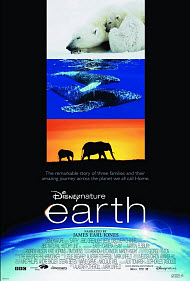
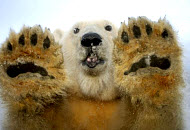

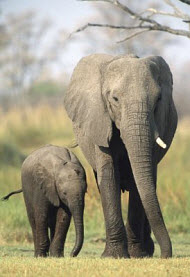

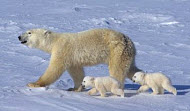
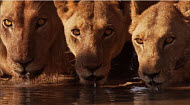
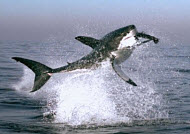
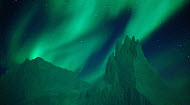
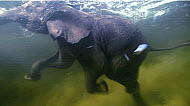

Should Christians be concerned about the environment? Answer
What is man’s responsibility to the environment? Answer
How might rain forest destruction affect our weather? Answer
Can evolution be the source of life in all its complexity? Answer
Where did life come from? Is evolution really the best scientific answer? Answer
 Top choice for accurate, in-depth information on Creation/Evolution. Our SuperLibrary is provided by a top team of experts from various respected scientific creationist organizations who answer your questions on a wide variety of topics. Multilingual.
Top choice for accurate, in-depth information on Creation/Evolution. Our SuperLibrary is provided by a top team of experts from various respected scientific creationist organizations who answer your questions on a wide variety of topics. Multilingual.
| Featuring |
|---|
|
Patrick Stewart (Narrator—voice: English version) James Earl Jones (Narrator—voice) |
| Director |
|
Alastair Fothergill, Mark Linfield |
| Producer |
| Greenlight Media AG, BBC Worldwide, Disneynature, Stefan Beiten, Melissa Caron, Alastair Fothergill, Don Hahn, Michael Henrichs, Amanda Hill, Connie Nartonis Thompson, André Sikojev, Sophokles Tasioulis, Jon Thompson, Alix Tidmarsh, Nikolaus Weil |
| Distributor |
“The remarkable story of three families and their amazing journey across the planet we call Home.”
I’m going to be honest. I expected more out of this film. I was hoping for a new nature adventure geared toward kids that would help enhance our understanding of the Earth and help kids respect the beauty and wonder of God’s creation. Unfortunately, Disney videographers and filmmakers must have stumbled into the editing studio where the great documentaries “Planet Earth” and “Blue Planet” were made, and decided it was good enough just to use film they already had readily available, instead of going out and making a new experience for audiences.
The film itself encompasses the migration of families in different parts of the world: the polar bear, the humpback whale, and the elephant, mainly. It provides a look at their lives over the course of a year and their struggles to survive in our “ever changing world.” Geared towards kids, this film might be quite the snoozer for the parents, and nothing but eye candy for the children.
Thankfully, being a documentary, there’s no language or sex in this film, so one need not worry about the moral side of the newest installment from Disney Nature. Violence, however, is present. I expected more of a happy film, considering the goal and target audience, but surprisingly it really isn’t. There are 3 chase scenes where baby/juvenile animals are shown being attacked by predators to show what James Earl Jones’ so affectionately calls (without any copyright infringement repercussions) the “Circle of Life.” These scenes were very intense though. A young caribou is chased and hunted down to exhaustion by a wolf, a young antelope is tackled to the ground by a racing cheetah, and most disturbing of all, in one night vision scene, a young elephant is shown being attacked and taken down by a pride of lionesses on the hunt, and another baby elephant is shown walking off into the desert trying to find his mother, except he’s going the wrong direction, straight to his death. I and my fiancée were confused. We though this was about the great journey families make, not the tragedies they suffer. I’m not going to lie, it was slightly depressing stuff.
From a documentary/film standpoint, I think “Earth” greatly misses the target it was shooting for. Video footage that should be geared towards children with lots of movement and interesting animals falls bland in some spots with repeated shots of landscapes and open desert. And assuming you, as an adult, have watched documentaries in the past, you won’t find anything new (as a matter of fact you might find yourself saying like I did “wait a minute I’ve seen this before?”). The footage itself doesn’t break any new ground. The animals focused on are animals you can see in almost any zoo. The videographers didn’t find any new angle or experience, and I found most of the footage, as beautiful it was, to be a little “been there done that.”
In addition to the footage, I think the narration misses the mark, too. I always find that children focus on the video and the parents focus on not only the video, but also the factual information given in the audio. But it seemed like Disney tried to gear the narration of James Earl Jones towards the kids. Little jokes about onscreen antics and broad, sweeping generalizations about the Earth, the climate, and the animals are constant and leave older viewers with little to contemplate. Jones would say things like “And every year the ice melts sooner,” or “Every year, the deserts get bigger.” I wasn’t satisfied with that. How soon are they melting? Where? How much bigger are the deserts getting? At what rate? Which deserts? All of them? Half? This vague narrative approach to the documentary further solidified my view that Disney really didn’t do as much with this as they could’ve.
I also found the political undertones to be a bit misleading. Much of the film translated into a guilt trip because of the tone and mood, and left me feeling unhappy, rather than filled with a sense of learning and appreciation. I felt the film pointed too many fingers at humans, for all of our faults, for taking the Earth from the animals. Instead of just being a documentary about how we should take care of the Earth, I think it turned into a message of “look at where the Earth is: these dying baby animals and our climate change is humanity’s fault.” Whether or not you’re really a firm believer of this is beside the point. The point is, a documentary such as this should not brow beat, it should be to educate.
Thankfully, most of the underlying messages should be over the children’s heads. Chances are they’ll enjoy the sweet and cute pictures of baby animals and be fairly entertained by a fairly beautiful piece of film. You as a parent might get thoroughly bored, though, and roll your eyes a few times listening to some less than credible narration from James Earl Jones, watching video clips you might have already seen from past documentaries.
If you want my opinion, we as Americans always seem to have something to worry about, and it’s usually not well founded. In 1970, scientists predicted that by the year 2000, if we built more cars and more businesses, the air pollution would cause the average life expectancy to drop to 40 years old and the pollution would block 50 percent of the sun’s rays, thus cooling the planet. Obviously, we proved that worrying is like sitting in a rocking chair: it gives you something to do, but it sure doesn’t get you anywhere. God commanded us to take dominion, multiply, and use stewardship over the Earth (Genesis 1:26). I believe in that, but I don’t believe in worrying about the next big piece of environmental propaganda that’s supposed to destroy our Earth, because as far as I’m concerned, my God’s in control, and this planet isn’t going anywhere ‘til he says so.
In spite of all these negatives, however, I’m glad that I got to go sooner rather than later to see “Earth”, because Disney has vowed to “plant a tree” for every ticket sold in the opening week. That’s something I can be happy about: somewhere there’s a tree with my 8 dollars to thank. And that’s possibly all I really got out of “Earth.”
See list of Relevant Issues—questions-and-answers.


Gory, again, yes, but seeing that hungry animals usually eat, and that blood rarely enters the screen throughout the entire movie, it’s not much of a comparison to the graphic slaughters and explosions of the 21st century movies like “Spider-man” and “The Hulk.” Deaths are dramatized, but not eerie or horrific, and take place in (ironically :-)) a very ‘natural’ sense. Children under the age of 7 may require delicate explanation of some deaths, but other than that, there is no reason that your kid is going to come out of the theater with terrible images in his mind.
Lastly, a popular topic, as well, is that the movie closely mimics the footage of “Planet Earth” and “Blue Planet,” two widely available TV shows. In many ways it does, but if you can’t stomach the slight difference between the two, just think of it as a way to get out of the house and sit in a dark, quite, semi-peaceful place with some popcorn and good friends. Now, about it being sleepy… well, I’m not going to promise that, with the dark lights and *yawn* a full stomach of popcorn, you won’t be coming out of the theatre feeling a much more awake than a groggy bear emerging from hibernation. Not to say that the classical music and James Earl Jones’ lulling narration doesn’t contribute to this. …Worth your time, and, if you can get it matinee, worth your money, too. Wait for the DVD release, if you wanna be savvy (and also if you want to control the death or life scenes with the FFW button).
Moral rating: Good / Moviemaking quality: 4
none
To top it off is one scene of animals eating each other after the other… one such scene would have been enough to get the picture. It was torturous to watch so many times. Isaiah 11:6-9:6, “The wolf also shall dwell with the lamb, and the leopard shall lie down with the kid; and the calf and the young lion and the fatling together; and a little child shall lead them.” Sounds beautiful.
I don’t think God intended us or our children to take pleasure in watching what started to feel gratuitous… scenes over and over again… some in slow-mo… of an animal desperately frightened, trying to get away from a predator and being caught, interspersed with technically cool shots of the seasons changing, pretty, but no story… no real purpose for the film… not even global warming and what to do about it… though it was briefly mentioned… They never went anywhere with it. No story, purpose (except maybe that animals eat each other).
Though they had the equipment to get visually beautiful shots. It’s a shame that it was wasted on people who didn’t really know how to put it all together for a compelling story. Everyone I went with, kids and adults were disappointed, and said that even the National Geographic TV programs are better to watch than this. Most of the kids were completely disturbed by the constant killing of animals (though at least they weren’t as graphic as it could have been).
Moral rating: Average / Moviemaking quality: 2½
Moral rating: Offensive / Moviemaking quality: 5
Smaller children may be scared or sad when they watch the animals hunting and eating other animals, so it may not be a good idea to bring your 3 year old to this movie.
Moral rating: Good / Moviemaking quality: 5
Younger kids will probably enjoy this film better, because of its short running time--so it could be worth it then, but personally I would stick with the far superior, HD “Planet Earth” series.
Moral rating: Good / Moviemaking quality: 5
Moral rating: Good / Moviemaking quality: 4
I highly suggest reading an article called “Ecoguilt” by Ben Merkle. It can be found in the magazine “Credenda Agenda” and its articles can be found online (type Credenda Agenda into Google). Download the issue called “How to think about the War.” It is in Vol. 20, No. 1, page 43. We must understand that the Earth is cursed because we sinned in Adam, and only the gospel (NOT man’s efforts) will destroy that curse. We have God’s promises. Let’s believe them!

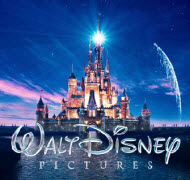
My Ratings: Moral rating: Good / Moviemaking quality: 5